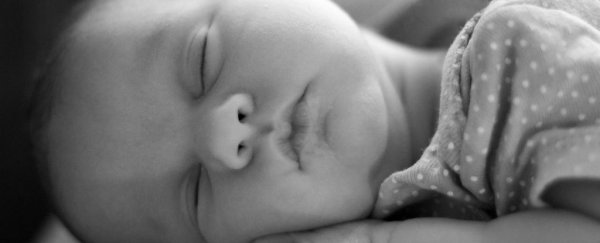A new report released by the National Academies of Sciences, Engineering, and Medicine today has advised that the US government should approve a controversial IVF technique that would allow babies to be born with genetic material from three parents.
Approved by the UK House of Commons early last year - their first three-parent baby expected to be born some time this year - the procedure isn't about facilitating non-traditional family structures, but is designed to enable women with mitochondrial disease to get pregnant without the risk of passing on genetic mutations to her children.
"The committee recommend that any initial MRT [mitochondrial replacement therapy] clinical investigations focus on minimising the future child's exposure to risk while ascertaining the safety and efficacy of the techniques," says the report.
The catch? Those children can only be boys,the researchers advise, because this would stop the mitochondrial disease from being passed down to future generations.
Let's break down how that works. Mitochondrial disease is an inherited disorder that affects around 1 in 4,000 people in the US, and causes debilitating physical, developmental, and cognitive disabilities such as loss of muscle coordination, seizures, vision and/or hearing loss, learning disabilities, and organ failure. It gets progressively worse with age, and there is no cure.
Having a baby the conventional way would put it at serious risk of inheriting the disease, so researchers have proposed an IVF technique called mitochondrial replacement therapy, that requires a small part of the child's DNA to be donated by someone other than the parents.
There a number of ways IVF clinics can choose to do this, but basically it involves replacing the mother's damaged mitochondrial DNA with the healthy mitochondrial DNA of a female donor in an egg, fertilising it with the father's sperm, and implanting it in the mother. Because mitochondrial DNA is only passed on by the mother, the child will end up with healthy, mitochondrial DNA from the donor. In a sense, it's sort of like a cure for mitochondrial disease, but one generation later.
As Michael Le Page reports for New Scientist, "Up to 17 people in the US may already have been born with donor mitochondria, because of a technique one clinic used to boost the success of IVF between 1997 and 2002 - when the FDA stepped in to stop it."
While in the UK, parents have been approved to have both boys and girls using this technique, the US National Academies of Sciences, Engineering, and Medicine has advised that comprehensive clinical trials be carried out on the technique before it's made available to the public, and because the implications of a child growing up with donor mitochondrial DNA are not yet clear, say only male embryos should be approved.
Arielle Duhaime-Ross explains over at The Verge:
"Because men don't pass down mitochondrial DNA to their children, this would stop modified mitochondrial DNA from being passed down through generations. This restriction differs substantially from last year's UK approval because lawmakers there included no restrictions on the sex of embryos.
The panel also suggested a number of steps to ensure the safety of the procedure -steps that include keeping track of any children created with the procedure for years after they're born. If the technique works in male embryos, it could then be used to make female children as well, the panel said."
So what they're saying is that the mother's damaged mitochondrial DNA is going to be entirely replaced by someone else's mitochondrial DNA, but because we don't yet know how this will affect the child, the procedure should initially render this a non-issue by only creating male embryos.
The FDA received the report today, and is expected to make a decision about whether or not to approve the technique shortly.
